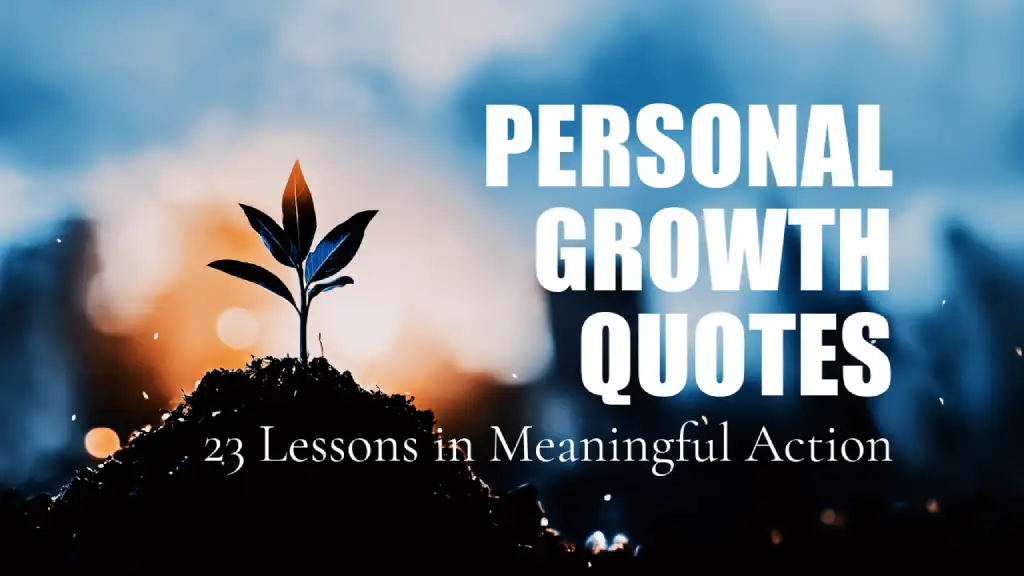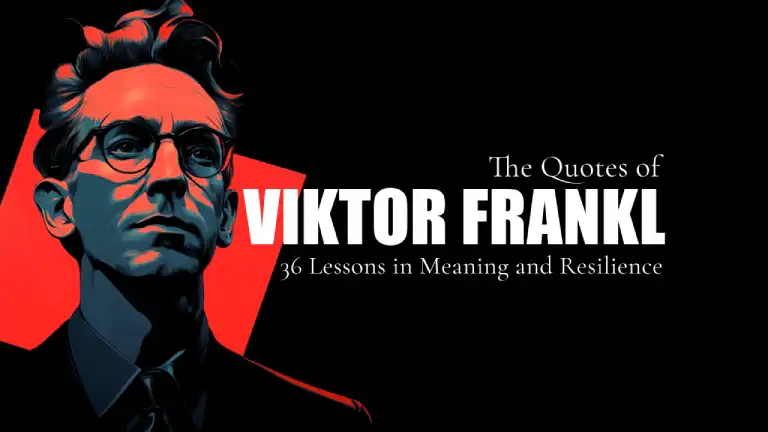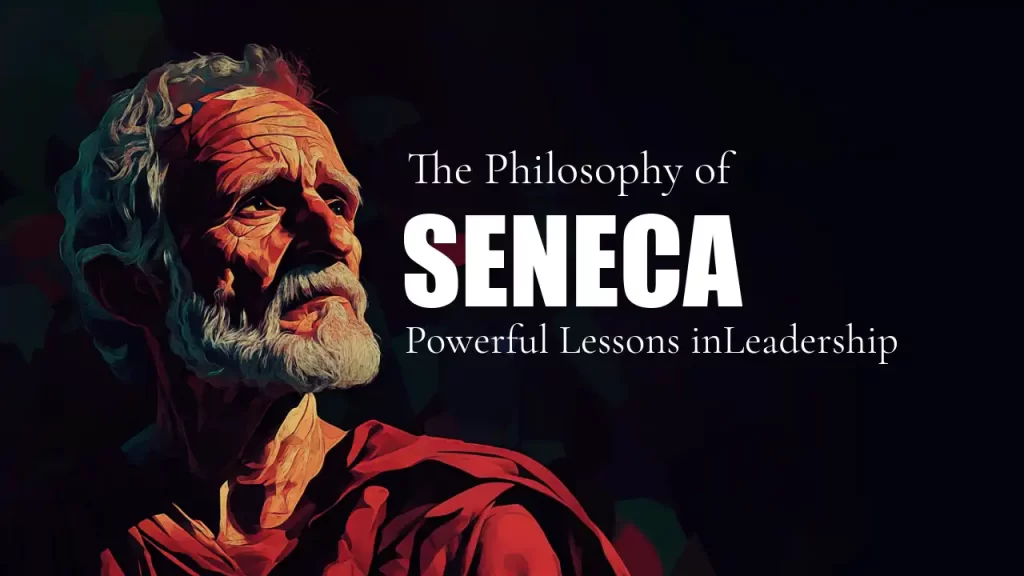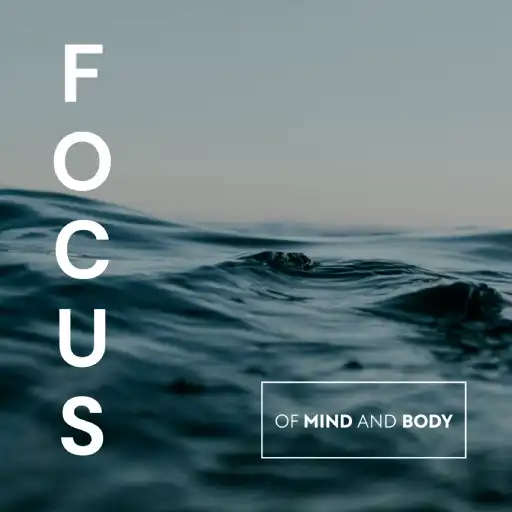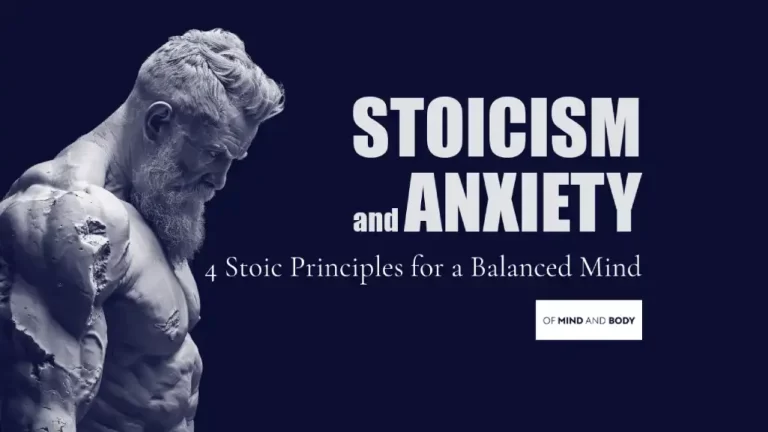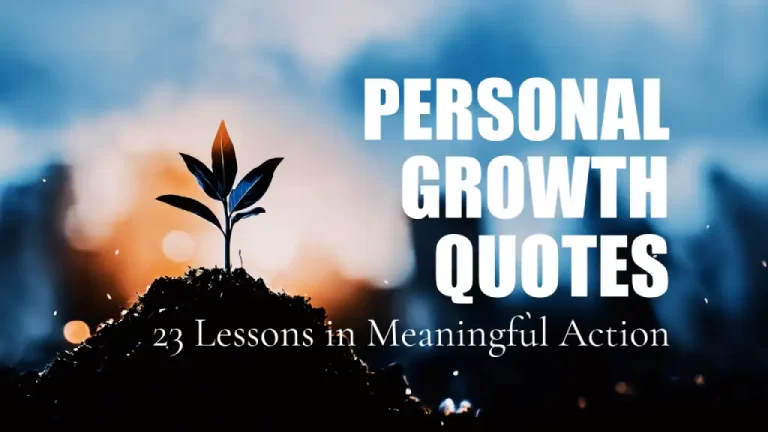In a world that often feels like it’s spinning faster than we can keep up, the quest for well–being has never been more critical. But what does it mean to be truly well? Is it just the absence of illness, or is there more to it? Enter PERMA, a groundbreaking framework, and cornerstone of Positive Psychology, that delves into five core elements of well-being: Positive Emotion, Engagement, Relationships, Meaning, and Accomplishments. This article aims to unpack each of these elements, offering you not just theoretical insights but also practical applications to enhance your life. From the role of joy, gratitude, and love in fostering positive emotions, to the transformative power of flow states and authentic relationships, we’ll explore how you can build a life that is not just good, but deeply fulfilling. So, if you’re looking to transcend the fleeting happiness of the moment and lay the foundation for enduring well–being, read on.
Positive Emotion: The Role of Joy, Gratitude, and Love in Well-Being

Joy as a Catalyst for Creativity and Exploration
While happiness is often a broad, somewhat nebulous concept, joy is usually tied to specific moments and activities. Whether it’s the joy of cooking a new recipe or the thrill of hitting a personal best in your fitness routine, these moments of joy often serve as catalysts for creativity and exploration. They encourage you to push boundaries and try new things, thereby enriching your life experience and offering a buffer against hedonic adaptation.
Gratitude: The Antidote to Entitlement
Gratitude goes beyond merely saying “thank you.” It’s an emotional state that encourages the recognition of good things in your life, often attributing them to external factors. For instance, feeling grateful for a warm, sunny day can shift your focus from what you lack to what you have. This shift is particularly useful in combating the effects of hedonic adaptation. A practical way to cultivate gratitude is by maintaining a gratitude journal, where you list things you’re thankful for. Over time, this practice can significantly elevate your baseline level of happiness.
Love: The Emotional Glue in Relationships
Love, in all its forms—romantic, platonic, familial—serves as an emotional glue that binds people together. It provides a sense of security and belonging, crucial elements for well–being. In the context of hedonic adaptation, love offers a unique advantage. While the initial “honeymoon phase” of a relationship may wane, the deeper emotional connection that develops over time serves as a more stable and enduring source of happiness. For example, the act of regularly expressing love and appreciation to your partner can reignite the initial passion and serve as a hedge against the complacency that often sets in over time.
Practical Application: The “Loving-Kindness Meditation”
A practical way to cultivate love is through the Loving-Kindness Meditation. This practice involves silently repeating phrases like “May I be happy, may I be well,” and gradually extending these wishes to loved ones, acquaintances, and even people with whom you have conflicts. This meditation not only fosters a sense of love and compassion for others but also contributes to your own well–being.
In summary, positive emotions like joy, gratitude, and love serve as much more than mere “feel-good” experiences. They play a pivotal role in broadening our cognitive and emotional landscapes, building resilience, and offering sustainable paths to happiness, thereby providing a robust counterpoint to the challenges posed by hedonic adaptation.
Engagement: The Flow State

What is Flow and Why Does It Matter?
Flow is a psychological state where you’re so engrossed in what you’re doing that you lose all sense of time and self. Coined by psychologist Mihaly Csikszentmihalyi, this concept has revolutionised our understanding of optimal experience. When you’re in a flow state, you’re not just passing the time; you’re deeply and intrinsically engaged. This level of engagement elevates the quality of the activity, making it rewarding in and of itself.
But why does achieving flow matter?
For starters, it’s a potent antidote to the monotony that often accompanies routine, offering a fresh perspective on everyday activities. It’s also a state where your cognitive functions operate at their peak, allowing for heightened creativity and problem-solving abilities. In a world where hedonic adaptation can make even the most exciting activities seem mundane over time, flow offers a way to continually derive deep satisfaction from what we do.
For example, consider a musician lost in the intricacies of a complex symphony, or a writer so engrossed in crafting a narrative that they forget about the world around them. These are instances of flow, where the individual is fully absorbed, deriving immense satisfaction from the task at hand.
When you find yourself deeply focused on a task, so much so that the rest of the world seems to fade away, you’re likely experiencing this state of flow. In such moments, you become impervious to the typical distractions that might otherwise disrupt your concentration, allowing you to remain steadfastly in your “flow,” a journey of heightened creativity, engagement, and satisfaction.
Achieving Flow in Everyday Activities
Flow isn’t restricted to grand endeavours or specialised tasks; it can be experienced in the most mundane activities. The key to achieving flow lies in the balance between the level of challenge and one’s skill. If an activity is too easy, it leads to boredom. If it’s too hard, it results in anxiety. The sweet spot is where the activity is challenging enough to engage but not so difficult that it overwhelms.
Let’s take the example of cooking. If you’re a novice, trying to whip up a five-course meal might be overwhelming, leading to stress rather than flow. On the other hand, if you’re an experienced chef, making a simple salad might not engage you enough. But cooking a new recipe that requires some skill and concentration could put you in a flow state, making the experience deeply rewarding.
Another everyday example could be gardening. If you’re adept at gardening, merely watering the plants might not be engaging. However, designing a new layout for your garden, figuring out the perfect spots for each plant considering the sunlight and soil, can be a task challenging enough to induce flow.
In the realm of work, let’s consider coding. For a seasoned programmer, writing basic code might feel monotonous. But working on a complex project that requires innovative solutions could lead to a flow state, making the work intrinsically rewarding.
Achieving flow in everyday activities is about setting incremental challenges for yourself. It’s about pushing your boundaries just enough to keep the task engaging. This harmonious balance not only enhances the quality of the experience but also serves as a sustainable way to derive joy, offering a meaningful counterbalance to the effects of hedonic adaptation.
Relationships: The Social Fabric of Happiness

The Importance of Authentic Connections
Humans are inherently social creatures, wired for interaction and community. While social media might give the illusion of connectedness, nothing replaces the depth and richness of authentic, face-to-face interactions. These genuine connections serve as emotional anchors, providing a sense of stability and well-being. They offer more than just a shoulder to cry on or a companion for Friday night outings; they contribute to a profound sense of belonging and purpose.
Consider the difference between a casual acquaintance and a close friend. With the former, conversations might revolve around superficial topics like weather or popular TV shows. But with a close friend, you can delve into existential questions, share your deepest fears, and celebrate life’s small victories. This level of emotional intimacy is irreplaceable and serves as a buffer against life’s various stressors. For instance, research shows that having a strong social support system can significantly mitigate the effects of stress and even contribute to longer life expectancy.
How to Cultivate Meaningful Relationships
Cultivating meaningful relationships is not a passive process; it requires concerted effort and intentionality. Here are some practical ways to nurture authentic connections:
1. Open Communication:
Honesty is the cornerstone of any meaningful relationship. Whether it’s sharing your feelings or discussing a problem, open communication fosters trust. For example, if you’re going through a tough time at work, instead of bottling it up, share it with a trusted friend or family member. You’ll not only feel lighter but also gain valuable perspectives.
2. Empathy:
Empathy goes beyond mere understanding; it’s about sharing another person’s feelings. When a friend is going through a difficult phase, being empathetic means you’re not just a sounding board but also emotionally present. It’s the difference between saying, “That must be hard for you” and “I can feel the weight of what you’re going through, and I’m here for you.”
3. Active Listening:
Often, we listen to respond, not to understand. Active listening involves fully concentrating, understanding, and responding to what the other person is saying. It’s about giving your undivided attention, which is a rare but invaluable gift in today’s distracted world. For instance, if your partner is talking about their day, put down your phone, look them in the eye, and genuinely engage in the conversation.
4. Shared Experiences:
Shared experiences, be it a weekend getaway, a cooking experiment, or even a challenging workout session, create lasting memories and deepen relationships. These experiences go beyond mere activities; they become stories that you co-author. For example, taking a spontaneous road trip with friends not only offers a break from routine but also creates a shared narrative, enriching your friendship.
5. Quality Time:
In the age of multitasking, giving someone your undivided attention is a form of love. It could be as simple as a walk in the park, a heart-to-heart conversation over coffee, or even a quiet evening reading together. These moments, devoid of distractions and interruptions, strengthen the emotional fabric of relationships.
6. Reciprocity:
A balanced relationship involves give-and-take. If one person is always the giver and the other only takes, the relationship becomes unsustainable. Make sure to offer support when the other person needs it, and don’t hesitate to ask for help when you’re the one in need.
By incorporating these elements into your interactions, you’re not just maintaining relationships; you’re enriching them. These authentic connections offer a robust counterpoint to the transient pleasures and inevitable declines of hedonic adaptation, serving as lasting sources of joy and fulfilment.
Meaning: Purpose Beyond Oneself

The Search for Meaning in Modern Life
In today’s fast-paced society, where the allure of material possessions and the instant gratification provided by social media likes are ever-present, the quest for deeper meaning in life becomes not just a philosophical musing but a psychological necessity. The ephemeral joys of a new purchase or a well-received Instagram post can offer momentary happiness, but they often fall prey to hedonic adaptation. The initial thrill fades, leaving us in search of the next quick fix.
So, how does one go about finding meaning in a world that often seems superficial? One approach is to engage in activities that provide a sense of accomplishment and contribution. For example, volunteering at a local shelter can offer a profound sense of purpose that a new smartphone simply cannot provide. When you see the impact of your actions on someone else’s life, the satisfaction derived is long-lasting and immune to the diminishing returns of hedonic pleasures.
Another avenue for finding meaning is through intellectual pursuits. Reading a thought-provoking book, engaging in philosophical discussions, or even taking up a new hobby like painting or playing a musical instrument can offer a deeper sense of fulfilment. These activities engage the mind and soul, providing a richness of experience that material possessions often fail to deliver.
Aligning Personal Goals with Greater Good
The concept of meaning takes on a new dimension when our personal goals and ambitions are aligned with the greater good. This doesn’t necessarily mean you have to change the world; even small actions can have a significant impact when they are purpose-driven.
Take, for instance, the case of a corporate employee who finds meaning by mentoring younger colleagues. The act of sharing knowledge and experience not only enriches the mentor’s life but also contributes to a nurturing work environment. This alignment of personal skills and community benefit creates a symbiotic relationship that enhances well-being for all involved.
Artistic endeavours also offer a fertile ground for aligning personal goals with broader societal impacts. A writer penning stories that shed light on social issues, or a musician composing songs that uplift people, are examples of how personal talents can serve a larger purpose. The joy derived from these creative processes is magnified when the art positively impacts its audience, offering a robust counterbalance to the effects of hedonic adaptation.
In the realm of personal relationships, the idea of serving a greater good can also manifest. A parent raising a child with strong ethical values, a friend offering emotional support during tough times, or even a couple working together on a community project—these are all instances where personal goals of love and connection align with the broader aim of societal betterment.
In conclusion, meaning is not a lofty ideal accessible only to philosophers or spiritual leaders; it’s a tangible, achievable state that offers a potent antidote to the transient nature of hedonic pleasures. By aligning our personal goals with activities that serve something larger than ourselves, we not only enrich our own lives but also contribute to a collective sense of purpose and well-being.
Accomplishments: The Value of Achievement

Setting and Achieving Goals for Lasting Satisfaction
The act of setting and achieving goals is akin to charting a course on a nautical map. Each goal serves as a landmark, guiding you through the labyrinthine journey of life. The process begins with identifying what you genuinely desire, be it personal or professional. For instance, you may aim to lose 20 pounds in six months or aspire to become a project manager within a year. These aren’t just whimsical thoughts; they are targeted objectives that give your actions a sense of direction.
Once the goals are set, the next step involves breaking them down into smaller, manageable tasks. If your goal is weight loss, this could mean setting weekly exercise routines or monthly weight check-ins. For career advancement, it might involve acquiring specific skills or certifications. The granularity of these tasks makes the overarching goal less daunting and more achievable.
The real magic happens when you start ticking off these smaller tasks. Each completed task not only boosts your self-esteem but also fortifies your resolve to achieve the larger goal. This sense of accomplishment is remarkably resistant to hedonic adaptation. Unlike the fleeting joy of buying a new gadget or going on a vacation, the satisfaction derived from achieving a goal has a more extended shelf life. It’s a joy that lingers, offering a sustained sense of well-being.
Practical Example:
Consider learning to play a musical instrument, like the guitar. The initial goal might be to play a simple song within a month. The smaller tasks could involve daily practice sessions, learning chords, and mastering strumming techniques. Each time you successfully play a chord or a part of the song, you experience a mini-victory, fueling your enthusiasm to achieve the ultimate goal.
The Psychology of Grit and Resilience
Grit and resilience are the linchpins of accomplishment. While grit refers to the unyielding courage and resolve to achieve long-term goals, resilience is the capacity to recover quickly from difficulties. These traits are not just innate qualities; they can be cultivated and honed.
Grit involves a blend of passion and perseverance. It’s the tenacity to stick with your goals, even when the going gets tough. Imagine you’re an aspiring writer facing a series of rejections. Grit is what keeps you writing, submitting, and improving, despite the setbacks. It’s the unwavering commitment to your craft, fueled by an intrinsic belief in your capabilities.
Resilience, on the other hand, is your emotional buoyancy. Life is replete with challenges and setbacks, be it a failed project at work or a personal loss. Resilience is what allows you to bounce back, to rise from the ashes like a proverbial phoenix. It involves adaptive strategies like positive re-framing, where you view challenges as opportunities for growth rather than insurmountable obstacles.
Together, grit and resilience create a formidable duo. They equip you with the mental and emotional armour to navigate life’s complexities, making the pursuit of goals not just feasible but deeply fulfilling. These traits act as bulwarks against the erosive effects of hedonic adaptation, offering a more sustained form of happiness.
Practical Example:
Let’s say you’re training for a marathon. Grit is what gets you up at 5 a.m. for your daily runs, even when it’s raining, and your bed is invitingly comfortable. It’s what keeps you going when your legs are aching, and every fibre of your being wants to quit. Resilience comes into play when you face setbacks, like an injury. Instead of wallowing in self-pity, you focus on recovery and adapt your training regimen, viewing the setback as a temporary detour rather than the end of the road.
In summary, accomplishments, fuelled by the potent combination of grit and resilience, offer a robust pathway to lasting happiness. They provide a sense of purpose and direction, qualities that are remarkably resistant to the transient nature of hedonic adaptation.
Conclusion

In the ceaseless whirlwind of modern life, where the pursuit of well-being often feels like chasing a mirage, the PERMA model stands as a beacon of Positive Psychology, guiding us toward a more profound, enduring form of happiness. This article has journeyed through the five pillars—Positive Emotion, Engagement, Relationships, Meaning, and Accomplishments—that construct this holistic framework. We’ve delved into the transformative power of joy, gratitude, and love; explored the captivating realm of flow states; underscored the irreplaceable value of authentic relationships; pondered the quest for meaning in a materialistic world; and celebrated the enduring satisfaction that comes from setting and achieving meaningful goals. But remember, the journey toward well–being is not a sprint but a marathon, requiring the grit to persevere and the resilience to adapt. As you navigate the complexities of life, let the PERMA model serve not just as a theoretical construct, but as a practical roadmap for building a life that is not merely good, but profoundly fulfilling. So, go forth and live your best life, for in the pursuit of true well–being, you’re not just enriching your own existence—you’re contributing to a happier, healthier world.



